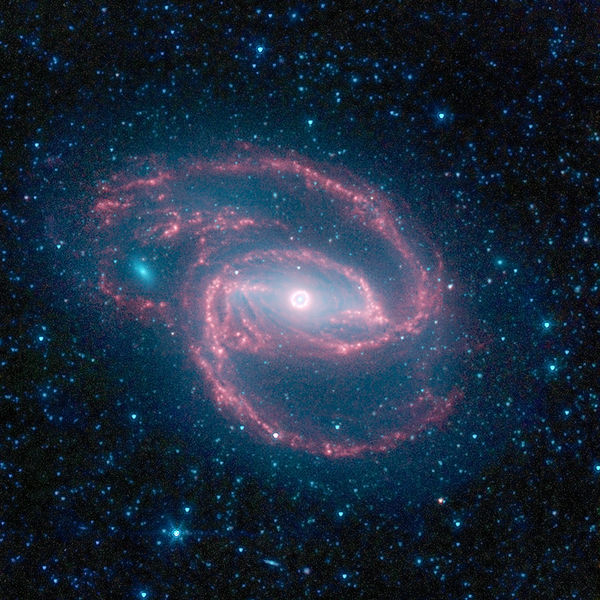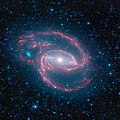Файл:Coiled Galaxy.jpg

Памер прагляду: 600 × 600 піксэлаў. Іншыя разрозьненьні: 240 × 240 піксэлаў | 480 × 480 піксэлаў | 768 × 768 піксэлаў | 1024 × 1024 піксэлаў | 2056 × 2056 піксэлаў.
Арыгінальны файл (2056 × 2056 піксэляў, памер файла: 1,04 Мб, тып MIME: image/jpeg)
Гісторыя файла
Націсьніце на дату/час, каб паглядзець, як тады выглядаў файл.
| Дата і час | Мініятура | Памеры | Удзельнік | Камэнтар | |
|---|---|---|---|---|---|
| цяперашняя | 02:20, 25 траўня 2010 |  | 2056 × 2056 (1,04 Мб) | Tryphon | Better quality, from http://www.spitzer.caltech.edu/Media/releases/ssc2009-14/ssc2009-14a.shtml (http://ipac.jpl.nasa.gov/media_images/ssc2009-14a1.jpg). |
| 16:29, 11 жніўня 2009 |  | 2056 × 2056 (457 кб) | TonyBallioni | {{Information |Description={{en|1=Original caption released with photo: NASA's Spitzer Space Telescope has imaged a wild creature of the dark -- a coiled galaxy with an eye-like object at its center.The 'eye' at the center of the galaxy is actually a mons |
Выкарыстаньне файла
Наступная старонка выкарыстоўвае гэты файл:
Глябальнае выкарыстаньне файла
Гэты файл выкарыстоўваецца ў наступных вікі:
- Выкарыстаньне ў ar.wikipedia.org
- Выкарыстаньне ў ast.wikipedia.org
- Выкарыстаньне ў cs.wikipedia.org
- Выкарыстаньне ў cy.wikipedia.org
- Выкарыстаньне ў de.wikipedia.org
- Выкарыстаньне ў el.wikipedia.org
- Выкарыстаньне ў en.wikipedia.org
- NGC 1097
- List of spiral galaxies
- Talk:NGC 1097
- Wikipedia:Featured pictures/Space/Looking out
- Wikipedia:Featured pictures thumbs/36
- Wikipedia:Featured picture candidates/November-2013
- Wikipedia:Featured picture candidates/File:Coiled Galaxy.jpg
- User talk:The Herald/Archive 4
- User:The Herald/Hall of Fame
- Wikipedia:Picture of the day/July 2015
- Template:POTD/2015-07-29
- User talk:The Herald/Archive 31
- Wikipedia:Main Page history/2015 July 29
- Wikipedia:Reference desk/Archives/Miscellaneous/2015 July 29
- Выкарыстаньне ў es.wikipedia.org
- Выкарыстаньне ў fa.wikipedia.org
- Выкарыстаньне ў fr.wikipedia.org
- Выкарыстаньне ў id.wikipedia.org
- Выкарыстаньне ў it.wikipedia.org
- Выкарыстаньне ў ja.wikipedia.org
- Выкарыстаньне ў kk.wikipedia.org
- Выкарыстаньне ў ko.wikipedia.org
- Выкарыстаньне ў mk.wikipedia.org
- Выкарыстаньне ў no.wikipedia.org
- Выкарыстаньне ў pl.wikipedia.org
- Выкарыстаньне ў pl.wikinews.org
- Выкарыстаньне ў pt.wikipedia.org
- Выкарыстаньне ў sk.wikipedia.org
Паказаць глябальнае выкарыстаньне гэтага файла.


